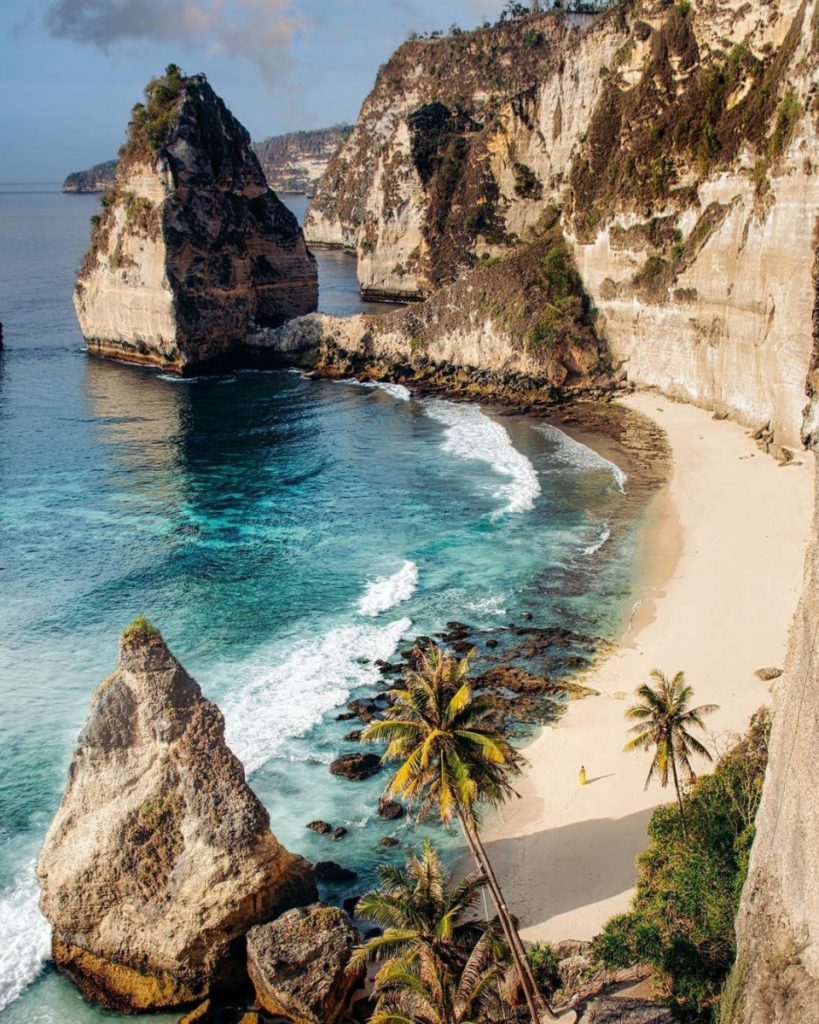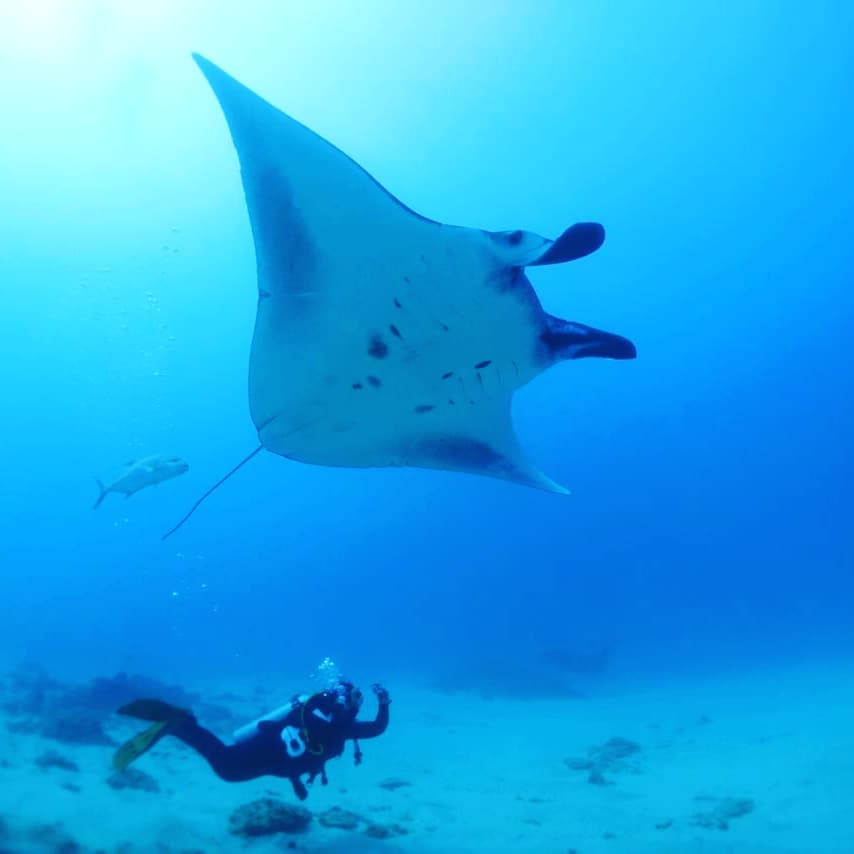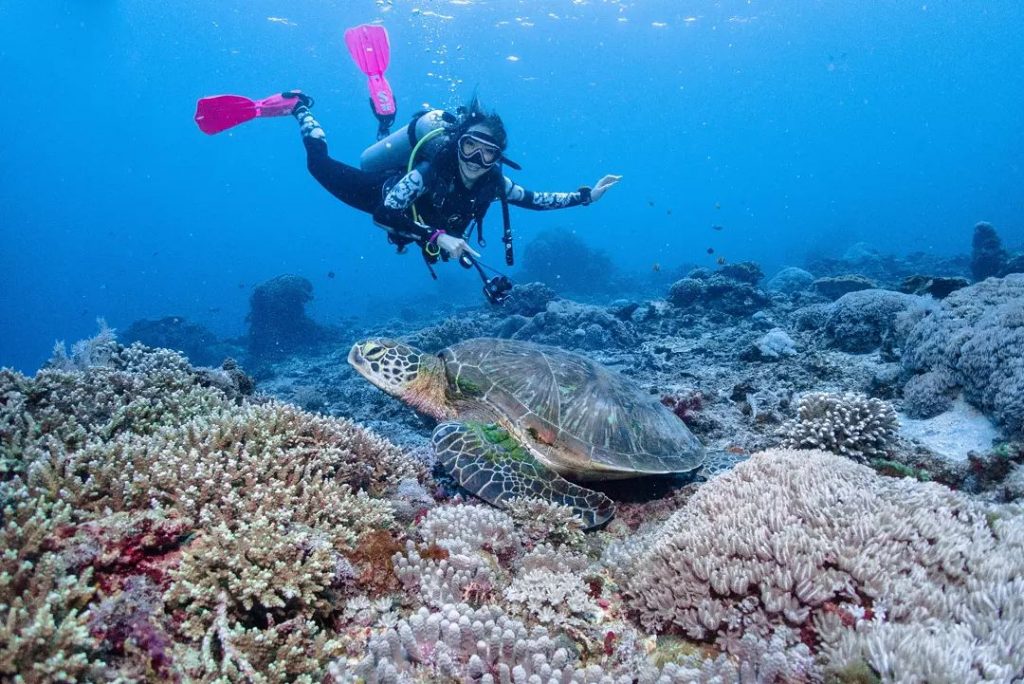
The Bandung Strait separates the three small islands of Nusa Penida, Nusa Ceningan, and Nusa Lembongan from Bali on the east side, making them a must-see for visitors to Bali. With a length of 17 kilometers, Nusa Penida is the largest of the three. There is a lot to see and do on the island, including magnificent cliffs, clean beaches, bat caves, temples, and waterfalls, but for underwater enthusiasts, diving from Nusa Penida was the highlight.
This post will provide you with information to assist you in planning your diving vacation to Nusa Penida, including recommendations for locating a diving center and the top dive locations on the island. We’ll also share valuable insights for newbie diver on Nusa Penida
Diving in Nusa Penida: What to Do in the Underwater

Mola mola (oceanic sunfish) and manta rays, two of the most amazing huge species to swim with in the ocean, can be found in Bali on the island of Nusa Penida. The three islands generally receives huge streams of currents, making it ideal for drift diving. However, the many bays that make up Nusa Penida’s topography also allows some easy snorkeling for beginners.
Snorkeling in Nusa Penida
The three Nusa islands are quite close together and separated by only a few hundred meters of seawater. So, if you go snorkeling on the island of Nusa Penida, chances are you’ve also gone snorkeling on the islands of Nusa Lembongan or Nusa Ceningan. Nusa Penida snorkeling spots are known for having some of the world’s most diversified underwater ecosystems, with pristine coral reefs and abundant marine life. They’re part of the Coral Tringle, and they like having fresh, plankton-rich water carried by the Indo Pacific Throughflow’s deep, powerful currents.
On the island of Nusa Penida, there are several snorkeling locations with reasonably calm water currents. The flows, on the other hand, can vary at any time. Additionally, visibility while snorkeling is good, ranging from 10 to 20 meters throughout the day, especially during the dry season in Bali.
More Diving & Travelling Stories:
What Divers Shouldn’t Do During Mola Mola Season Bali
Diving Conditions

The sea may be unforgiving, and you should be aware that the currents surrounding Nusa Penida are known to be strong and unpredictable. For novice dives, this may appear to be rather frightening. It also implies that the vast majority of dives are drift dives. This essentially implies you’ll begin there, drift with the stream, and end up somewhere else. At the end of your dive, the boat will pick you up. Staying closer to the reef is an excellent advice. You’ll have a lower probability of drifting away in the current this way.
More on the Currents in Nusa Penida
The diving locations surrounding Nusa Penida, in particular, are prone to strong currents that can be distressing to even the most experienced divers. The strong down-current that can draw divers down the wall makes some dive locations unsafe.
Apart from the down-current, many dive sites around Penida experience “washing machine” conditions. Always dive with a respected operator, pay attention to the dive site briefing, ask questions, and dive behind and close to your diving guide at all times.
More Diving & Travelling Stories:
Seven Types of Diving to Explore at Bali Dive Sites!
Water Temperature in Nusa Penida
The temperature of the water around the Nusa islands varies greatly according on the season, time of day, diving depth, and dive location. Between November and May, the water temperature is between 27° and 29°C, while between June and October, it is between 16° and 26°C (north coast of Penida tend to be warmer than the south).
During the peak season of July to October, dive destinations like Crystal Bay and Blue Corner are very frigid, with temperatures ranging from 16 to 19 degrees Celsius. If you plan on diving these sites in quest of mola molas, we strongly advise you to bring an extra layer, such as a hooded vest.
Best Time to Visit Nusa Penida for Mola Mola
One of the best spots in the world to watch Mola Mola is Nusa Penida. And you can dive with the Mola in relatively cheaper price than in other part of the world, too! The best time to see them is between August and October. The presence of mola will be determined by the tides and current. The optimum time is between the new and full moons, when there is a long slack tide.
Ready for some amazing underwater exploration to Nusa Penida?